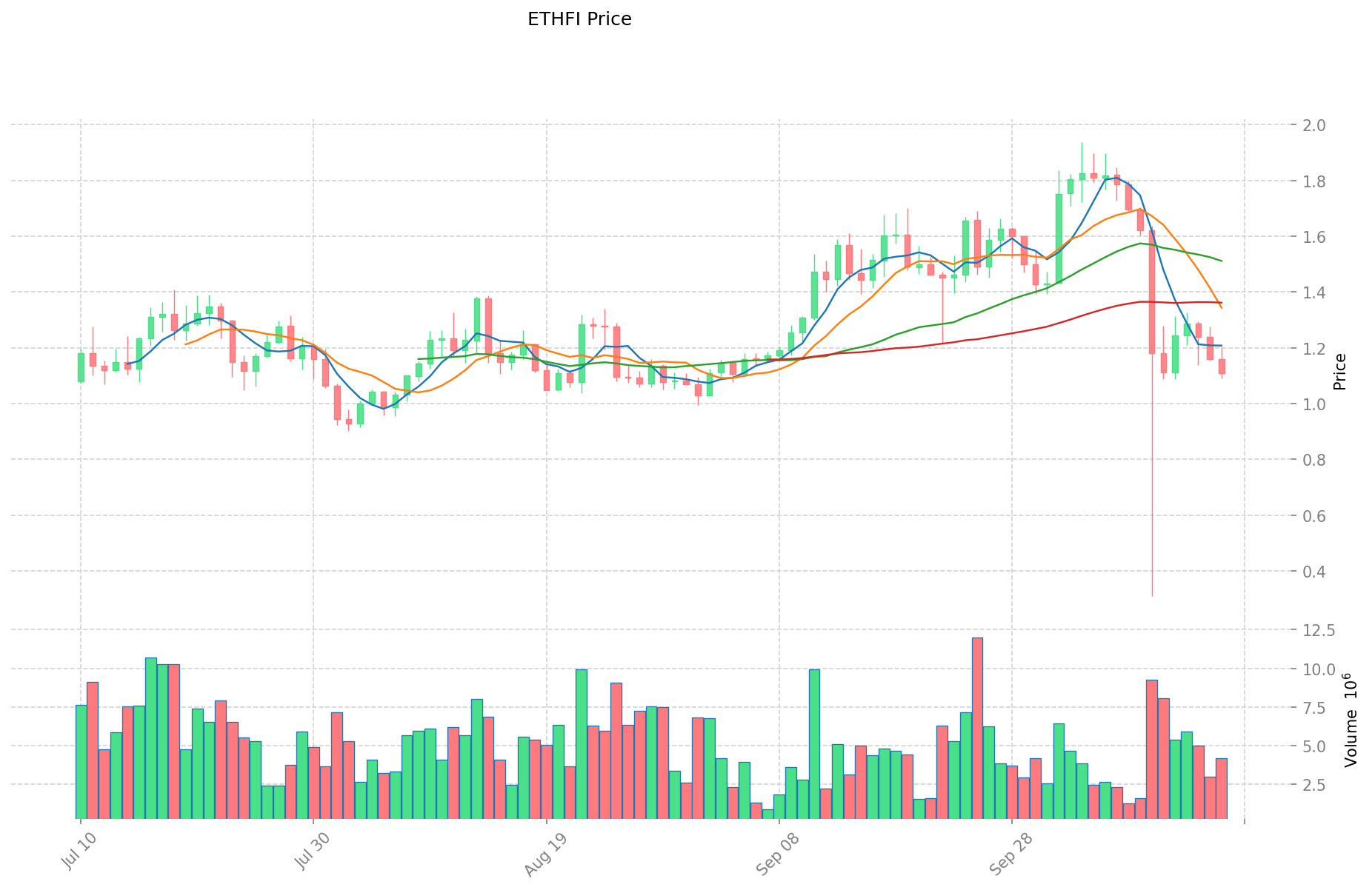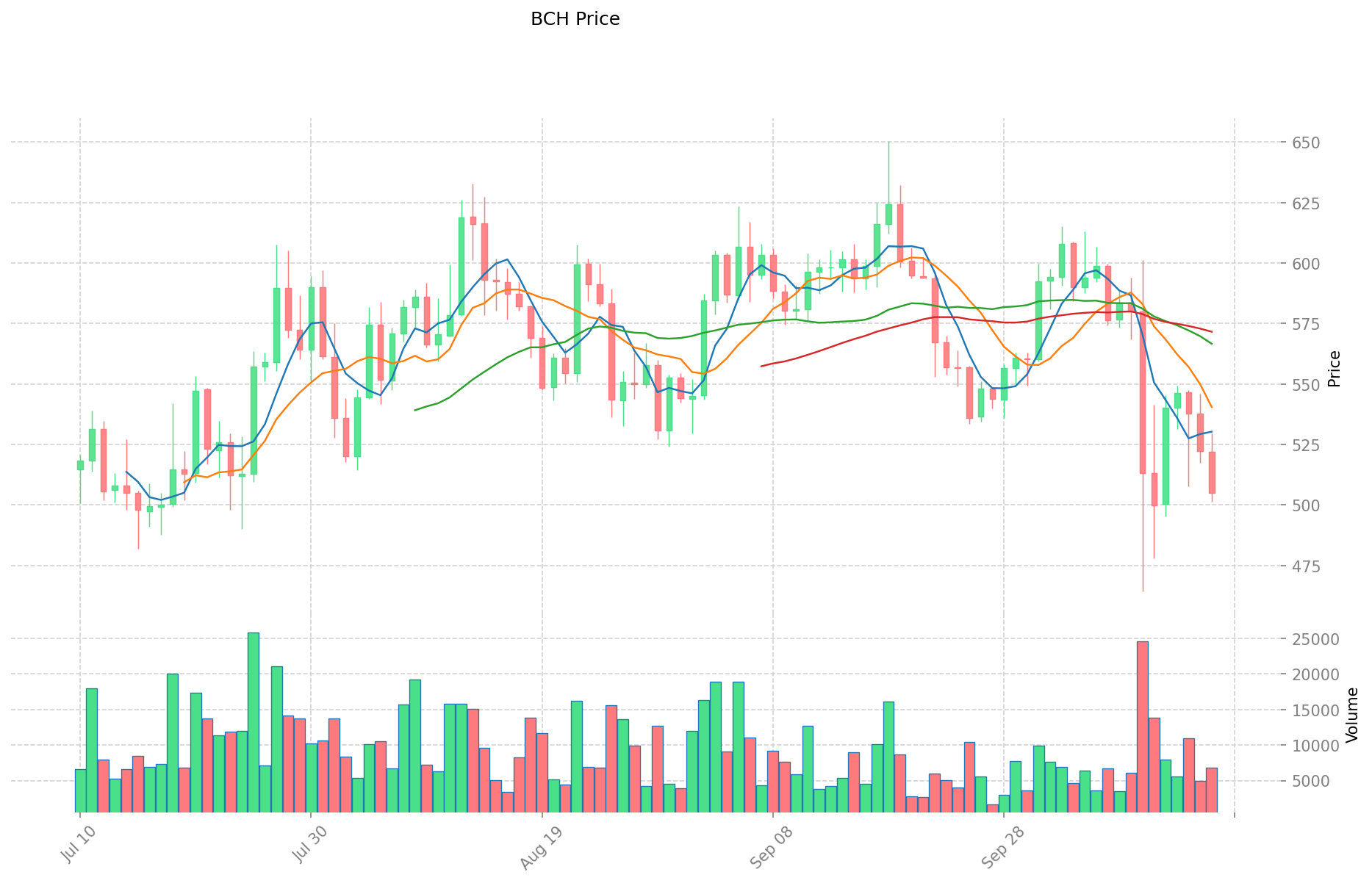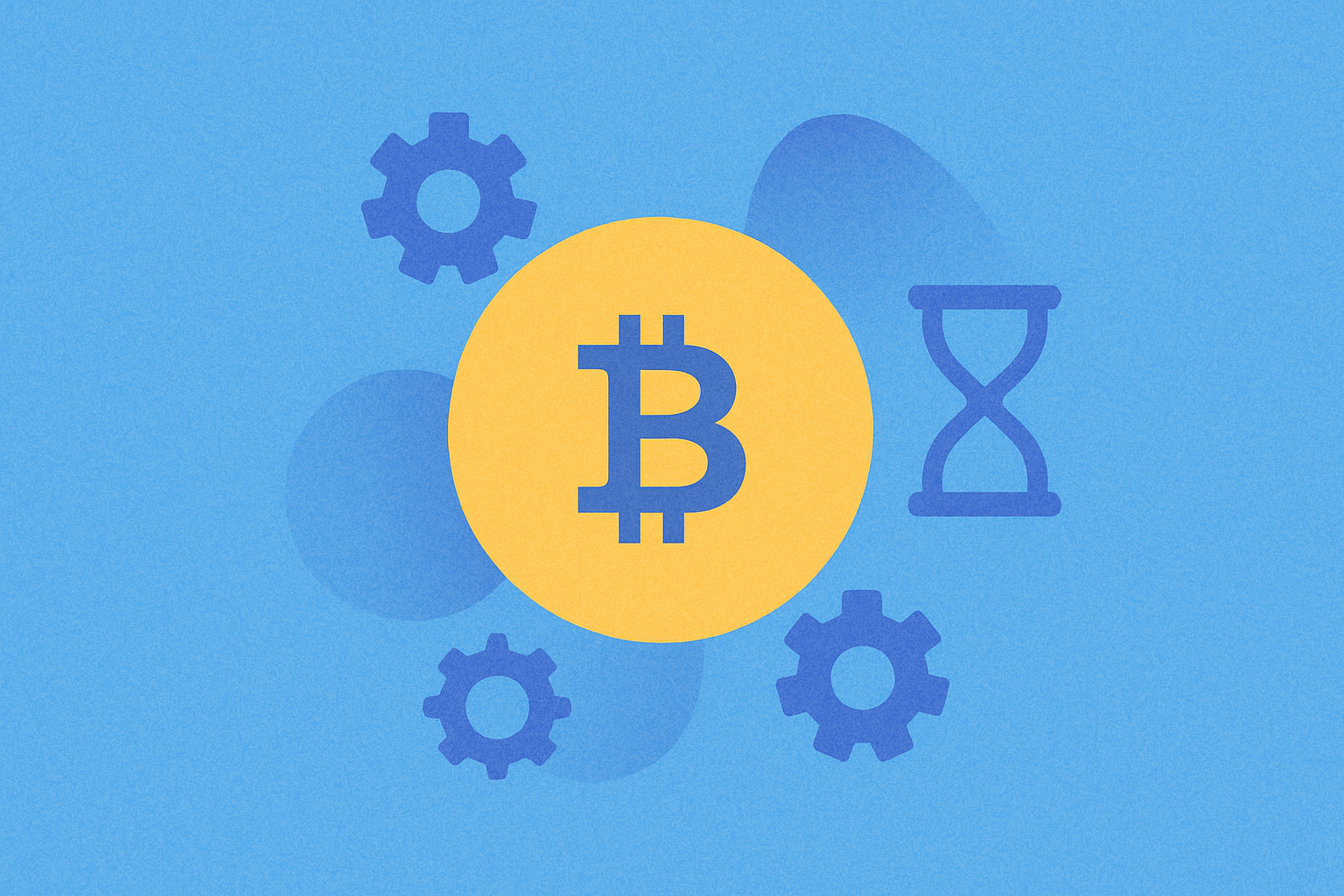ETHFI ve BCH: İki Önde Gelen Kripto Paranın Performansı ile Potansiyelinin Karşılaştırılması

Giriş: ETHFI ve BCH Yatırımlarının Karşılaştırılması
Kripto para piyasasında ETHFI ile BCH’nin karşılaştırılması, yatırımcıların gündeminden düşmeyen bir konu olmuştur. Her iki varlık, piyasa değeri sıralaması, kullanım alanları ve fiyat performansı açısından belirgin farklılıklar gösterirken, kripto varlıklar arasında da farklı konumlandırmalara sahiptir.
Ether.Fi (ETHFI): 2024 yılında piyasaya sürülen bu varlık, Ethereum için sunduğu yeni stake protokolüyle piyasa tarafından hızla kabul görmüştür.
Bitcoin Cash (BCH): 2017’de çıkışından bu yana “eşler arası elektronik nakit sistemi” olarak anılan BCH, küresel işlem hacmi ve piyasa değeriyle önde gelen kripto paralar arasında yer alır.
Bu makalede, ETHFI ve BCH’nin yatırım değeri; geçmiş fiyat hareketleri, arz mekanizmaları, kurumsal benimseme, teknik ekosistemler ve gelecek öngörüleri başlıklarında kapsamlı şekilde analiz edilerek, yatırımcıların en çok merak ettiği şu soruya yanıt aranacaktır:
“Şu an hangisi daha avantajlı bir yatırım?”
I. Fiyat Geçmişi ve Mevcut Piyasa Durumu
ETHFI ve BCH Tarihsel Fiyat Eğilimleri
- 2024: ETHFI, 27 Mart 2024’te tüm zamanların en yüksek seviyesi olan 8,658 ABD dolarına ulaştı.
- 2017: BCH, bir Bitcoin hard fork’u olarak piyasaya sürüldü ve ilk fiyatı 555,89 ABD dolarıydı.
- Karşılaştırmalı analiz: Son döngüde ETHFI, zirve noktası olan 8,658 ABD dolarından 0,3086 ABD dolarına kadar gerilerken; BCH daha istikrarlı seyrederek şu anda 503,66 ABD dolarından işlem görüyor.
Mevcut Piyasa Durumu (17 Ekim 2025)
- ETHFI güncel fiyatı: 1,1064 ABD doları
- BCH güncel fiyatı: 503,66 ABD doları
- 24 saatlik işlem hacmi: ETHFI 4.798.666 ABD doları, BCH 3.441.496 ABD doları
- Piyasa Duyarlılık Endeksi (Korku & Açgözlülük Endeksi): 28 (Korku)
Anlık fiyatları görmek için tıklayın:
- ETHFI güncel fiyatı Piyasa Fiyatı
- BCH güncel fiyatı Piyasa Fiyatı
II. Temel Göstergelerin Karşılaştırılması
Piyasa Değeri
- ETHFI: 572.397.613 ABD doları
- BCH: 10.042.920.538 ABD doları
Dolaşımdaki Arz
- ETHFI: 517.351.422 ETHFI
- BCH: 19.939.881 BCH
Tüm Zamanların En Yüksek / En Düşük Fiyatı
- ETHFI: ATH 8,658 ABD doları (27.03.2024) / ATL 0,3086 ABD doları (10.10.2025)
- BCH: ATH 3.785,82 ABD doları (20.12.2017) / ATL 76,93 ABD doları (15.12.2018)
Fiyat Değişimi (24s)
- ETHFI: -%4,68
- BCH: -%3,53
III. Teknoloji ve Gelişim
ETHFI (Ether.Fi)
- Ethereum için yeni nesil staking protokolü
- Varlıklar, Eigenlayer ile doğrudan yeniden stake edilir
- Kullanıcılar, DeFi protokollerinde kullanılabilen likit staking token’ı eETH elde eder
BCH (Bitcoin Cash)
- 2017’de Bitcoin’den hard fork olarak oluşturuldu
- 8MB blok boyutu ile zincir üstü ölçeklenmeye odaklanır
- Küresel düzeyde eşler arası elektronik ödeme sistemi olmayı hedefler
IV. Ekosistem ve Benimsenme
ETHFI
- eETH’nin kullanımını artırmak için çeşitli DeFi protokolleriyle entegre olur
- ETHFI token’ı ile merkeziyetsiz yönetişime odaklanır
BCH
- Pek çok işletmede ödeme yöntemi olarak yaygın şekilde kabul edilir
- Aktif geliştirici topluluğu, çeşitli uygulamalar ve iyileştirmeler üzerinde çalışır
V. Gelecek Görünümü ve Olası Riskler
ETHFI
- Ethereum staking popülerleştikçe büyüme potansiyeli taşıyor
- Diğer likit staking çözümlerinden gelen rekabet ve düzenleyici belirsizlikler risk oluşturuyor
BCH
- Bir değişim aracı olarak gelişimini sürdürmeye odaklanıyor
- Bitcoin’e kıyasla daha düşük hash oranı nedeniyle piyasa rekabeti ve ağ güvenliğini koruma konusunda zorluklar yaşayabilir
VI. Sonuç
ETHFI, Ethereum staking alanında yenilikçi bir yaklaşım sunarken; BCH, kripto para piyasasında istikrarlı bir alternatif olmayı başarmıştır. ETHFI’nin büyüme potansiyeli yüksektir ancak son fiyat geçmişi dalgalanmanın da yüksek olduğunu göstermektedir. BCH ise büyük piyasa değeri ve uzun geçmişiyle istikrar sunarken, yeni projelere kıyasla büyüme potansiyeli görece sınırlı olabilir. Yatırımcılar, bu varlıkları değerlendirirken risk toleranslarını ve yatırım hedeflerini dikkate almalıdır.


Yatırım Değeri Analizi: ETHFI ve BCH’nin Temel Etkenleri
I. ETHFI ve BCH Karşılaştırmalı Analizi
ETHFI Genel Bakış
ETHFI, sorunsuz ve güvenli delege staking hizmetleri sunan; geleneksel staking platformlarında yaşanan zorlukları aşmayı hedefleyen yeni nesil bir kripto paradır. Daha düşük likiditeye sahip yeni bir dijital varlık olan ETHFI’nin piyasa bilinirliği giderek artmaktadır.
BCH Genel Bakış
Bitcoin Cash (BCH), 2017 yılında bir Bitcoin fork’u olarak ortaya çıkmış; 32MB blok boyutuyla (Bitcoin’in 1MB’sine kıyasla) “eşler arası elektronik nakit sistemi” olmayı hedeflemiştir. Bu sayede BCH, aynı anda daha fazla işlemi onaylayabilir, daha hızlı işlem süreleri ve çok daha düşük ücretler sunar.
II. ETHFI ve BCH Yatırım Değerini Etkileyen Temel Faktörler
Arz Mekanizması Karşılaştırması (Tokenomik)
- ETHFI: Yerleşik kripto paralara göre daha düşük dolaşıma sahip yeni bir token
- BCH: Bitcoin modeline benzer şekilde sabit arz ve sınırlı dolaşım
- 📌 Tarihsel eğilim: Sınırlı arzlı kripto paralar, talep arttığında ve dolaşım düşük kaldığında genellikle fiyat artışı yaşar.
Kurumsal Benimsenme ve Piyasa Uygulamaları
- Kurumsal varlıklar: BCH, başlıca borsalarda işlem çiftleriyle daha geniş tanınırlığa sahip büyük bir kripto paradır
- Kurumsal uygulamalar: BCH, düşük ücretleri sayesinde günlük işlemler, online ödemeler ve sınır ötesi transferler için uygundur
- Ulusal politikalar: Düzenleyici değişiklikler, her iki varlıkta da piyasa güvenini doğrudan etkiler
Teknik Gelişim ve Ekosistem Oluşumu
- ETHFI teknik odağı: Ağ bütünlüğünü korumada kritik rol üstlenen Ethereum doğrulayıcılarına özel staking hizmetleri sunar
- BCH teknik gelişimi: Blok boyutunun 8MB’dan 32MB’a çıkarılmasıyla daha hızlı işlem ve daha düşük ücret sağlar
- Ekosistem karşılaştırması: BCH, küçük ölçekli DApp geliştirmelerine olanak tanırken esas olarak ödeme uygulamalarına odaklanır; özellikle oyun, içerik üretimi ve yayın platformlarında mikro ödemeler için uygundur
Makroekonomik Faktörler ve Piyasa Döngüleri
- Enflasyonist ortamlardaki performans: BCH, bazı yatırımcılarca geleneksel piyasa belirsizliklerine karşı çeşitlendirme aracı olarak görülmektedir
- Makroekonomik politika etkisi: Geleneksel piyasa oynaklığı, enflasyon, faiz oranları ve jeopolitik riskler; geleneksel ve kripto varlıklar arasındaki sermaye akışını doğrudan etkiler
- Jeopolitik faktörler: BCH, düşük maliyetli ve hızlı transfer olanağıyla özellikle gelişmekte olan ülkeler ve sınır ötesi çalışanlar için avantaj sunar
III. 2025-2030 Fiyat Tahmini: ETHFI ve BCH
Kısa Vadeli Tahmin (2025)
- ETHFI: Muhafazakâr 0,77 - 1,11 ABD doları | İyimser 1,11 - 1,25 ABD doları
- BCH: Muhafazakâr 438,26 - 503,75 ABD doları | İyimser 503,75 - 695,18 ABD doları
Orta Vadeli Tahmin (2027)
- ETHFI, büyüme evresine geçebilir; beklenen fiyat aralığı 1,16-1,79 ABD doları
- BCH, konsolidasyon evresine girebilir; beklenen fiyat aralığı 587,00-880,49 ABD doları
- Ana itici güçler: Kurumsal sermaye girişi, ETF, ekosistem gelişimi
Uzun Vadeli Tahmin (2030)
- ETHFI: Temel senaryo 1,69 - 2,14 ABD doları | İyimser senaryo 2,14 - 2,46 ABD doları
- BCH: Temel senaryo 733,39 - 965,00 ABD doları | İyimser senaryo 965,00 - 1.399,23 ABD doları
Feragat: Buradaki bilgiler yalnızca bilgilendirme amaçlıdır ve yatırım tavsiyesi değildir. Kripto para piyasaları yüksek volatiliteye ve öngörülemezliğe sahiptir. Yatırım kararı almadan önce mutlaka kendi araştırmanızı yapınız.
ETHFI:
| Yıl | Tahmini En Yüksek Fiyat | Tahmini Ortalama Fiyat | Tahmini En Düşük Fiyat | Değişim Oranı |
|---|---|---|---|---|
| 2025 | 1,249328 | 1,1056 | 0,77392 | 0 |
| 2026 | 1,49537928 | 1,177464 | 0,85954872 | 6 |
| 2027 | 1,7908049976 | 1,33642164 | 1,1626868268 | 20 |
| 2028 | 2,314147711824 | 1,5636133188 | 1,078893189972 | 41 |
| 2029 | 2,34604542352752 | 1,938880515312 | 1,20210591949344 | 75 |
| 2030 | 2,463832414832724 | 2,14246296941976 | 1,69254574584161 | 93 |
BCH:
| Yıl | Tahmini En Yüksek Fiyat | Tahmini Ortalama Fiyat | Tahmini En Düşük Fiyat | Değişim Oranı |
|---|---|---|---|---|
| 2025 | 695,175 | 503,75 | 438,2625 | 0 |
| 2026 | 623,441 | 599,4625 | 497,553875 | 19 |
| 2027 | 880,49052 | 611,45175 | 586,99368 | 21 |
| 2028 | 977,22218685 | 745,971135 | 432,6632583 | 48 |
| 2029 | 1.068,379859547 | 861,596660925 | 654,813462303 | 71 |
| 2030 | 1.399,2329773422 | 964,988260236 | 733,39107777936 | 91 |
IV. Yatırım Stratejisi Karşılaştırması: ETHFI ve BCH
Uzun Vadeli ve Kısa Vadeli Yatırım Stratejileri
- ETHFI: Ethereum ekosistemi ve staking inovasyonlarına odaklanan yatırımcılar için uygundur
- BCH: İstikrar ve ödeme odaklı kullanım senaryosu arayan yatırımcılar için uygundur
Risk Yönetimi ve Varlık Dağılımı
- Temkinli yatırımcılar: ETHFI %20, BCH %80
- Agresif yatırımcılar: ETHFI %60, BCH %40
- Koruma araçları: Stablecoin portföyü, opsiyonlar, çapraz para portföyleri
V. Potansiyel Risk Karşılaştırması
Piyasa Riski
- ETHFI: Düşük piyasa değeri ve yeni proje olması nedeniyle volatilitesi yüksektir
- BCH: Genel kripto piyasa trendlerinden ve ödeme odaklı rakiplerden etkilenebilir
Teknik Risk
- ETHFI: Ölçeklenebilirlik, ağ istikrarı, akıllı sözleşme açıkları
- BCH: Hash oranı yoğunlaşması ve olası güvenlik açıkları
Düzenleyici Risk
- Küresel düzenleyici politikalar her iki varlığı farklı şekilde etkileyebilir; BCH, ödeme odaklı bir kripto para olarak daha fazla denetime tabi tutulabilir
VI. Sonuç: Hangisi Daha İyi Bir Yatırım?
📌 Yatırım Değeri Özeti:
- ETHFI’nin avantajları: Yenilikçi staking çözümü, Ethereum ekosisteminde büyüme potansiyeli
- BCH’nin avantajları: Güçlü geçmiş, yaygın ödeme kabulü, daha büyük piyasa değeri
✅ Yatırım Tavsiyesi:
- Yeni yatırımcılar: İstikrarı ve yerleşik piyasa konumuyla BCH’ye daha fazla ağırlık verebilir
- Deneyimli yatırımcılar: ETHFI’nin büyüme potansiyelinden ve BCH’nin istikrarından dengeli şekilde yararlanabilir
- Kurumsal yatırımcılar: BCH’nin likiditesini ve piyasa değerini değerlendirebilir, ETHFI’nin Ethereum staking ekosistemindeki gelişimini takip edebilir
⚠️ Risk Uyarısı: Kripto para piyasaları yüksek volatiliteye sahiptir. Bu analiz yatırım tavsiyesi değildir. None
VII. Sıkça Sorulan Sorular
S1: ETHFI ile BCH arasındaki temel farklar nelerdir? C: ETHFI, Ethereum için yeni bir staking protokolüdür; BCH ise eşler arası elektronik nakit sistemi olma amacıyla Bitcoin’den ayrılmıştır. ETHFI, DeFi’de kullanılabilen likit staking token’ı (eETH) sunarken; BCH, daha büyük blok boyutları sayesinde daha hızlı ve düşük maliyetli işlemler sunar.
S2: ETHFI mi yoksa BCH mi daha yüksek piyasa değerine sahip? C: BCH’nin piyasa değeri çok daha büyüktür. En güncel verilere göre BCH’nin piyasa değeri 10.042.920.538 ABD doları, ETHFI’nin ise 572.397.613 ABD dolarıdır.
S3: ETHFI ve BCH’nin fiyat eğilimleri nasıl karşılaştırılır? C: ETHFI, daha yeni bir varlık olarak yüksek volatilite göstermektedir; 8,658 ABD dolarından 0,3086 ABD dolarına kadar gerilemiştir. BCH ise daha istikrarlı seyrederek 503,66 ABD dolarında işlem görmektedir.
S4: ETHFI ve BCH’nin yatırım değerini etkileyen başlıca faktörler nelerdir? C: Temel faktörler arasında arz mekanizması, kurumsal benimseme, teknik gelişim, ekosistem oluşumu ile enflasyon ve jeopolitik riskler gibi makroekonomik unsurlar yer alır.
S5: ETHFI ve BCH’nin gelecek fiyat öngörüleri nasıl farklılaşıyor? C: 2030 yılı için iyimser senaryoda ETHFI’nin 1,69 - 2,46 ABD dolarına, BCH’nin ise 733,39 - 1.399,23 ABD dolarına ulaşacağı öngörülmektedir. ETHFI oran olarak daha yüksek büyüme potansiyeli sunarken, BCH daha fazla istikrar sağlar.
S6: ETHFI ve BCH yatırımlarında öne çıkan başlıca riskler nelerdir? C: ETHFI, yeni bir proje olarak daha yüksek volatilite ve teknik riskler taşır. BCH ise genel kripto piyasa trendlerinden ve ödeme odaklı olması nedeniyle daha fazla düzenleyici incelemeye maruz kalabilir. Her iki varlığın da piyasa, teknik ve düzenleyici riskleri bulunmaktadır.
S7: Farklı yatırımcı tipleri için hangisi daha avantajlıdır? C: Yeni yatırımcılar istikrarı nedeniyle BCH’ye daha fazla ağırlık verebilir. Deneyimli yatırımcılar, iki varlığa dengeli yatırım yapabilir. Kurumsal yatırımcılar ise BCH’nin likiditesini değerlendirirken, ETHFI’nin Ethereum ekosistemindeki gelişimini izleyebilir.

kripto neden çöküyor ve toparlanacak mı?

Kripto Çöküşü mü Yoksa Sadece Düzeltme mi?

En İyi Kripto Alım, XRP'yi Geride Bırakıyor

Kripto Piyasası Geri Çekilmesi: BTC, ETH, SOL ve DOGE'deki Düşüşün Arkasında Ne Var?

2025 yılında kripto piyasasındaki dalgalanma, fiyat trendlerini nasıl etkiledi?

2025 yılında kripto para fiyatlarındaki dalgalanma, geleneksel piyasalara göre nasıl bir karşılaştırma sunuyor?

Ethereum 2.0: Yatırım İçin Kapsamlı Rehber







